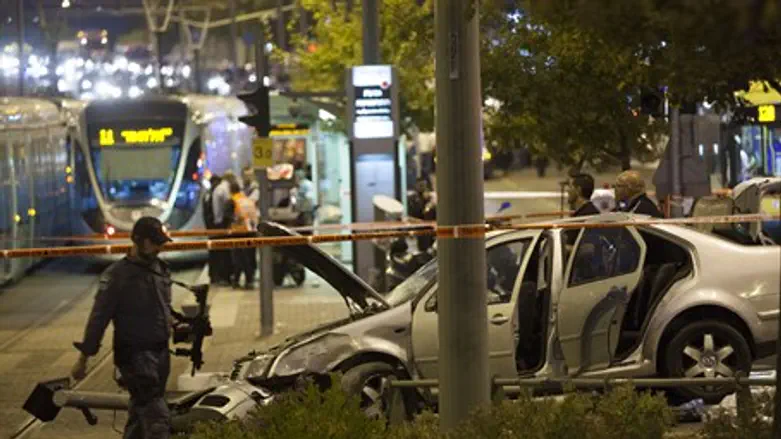
The CAMERA media watchdog group has mounted a frontal assault on a New York Times article yet again – this time regarding biased coverage of the Palestinian terror attack in which an infant was killed.
At issue is the Times story reporting on last week's Palestinian terrorist attack in Jerusalem that killed a 3-month-old infant and wounded eight other Israelis. "But instead of presenting the rather clear-cut events in an objective, straightforward manner," writes CAMERA, "reporter Isabel Kershner quickly redirected readers away from the facts of Palestinian violence to focus instead on Israel's alleged misdeeds."
The biased coverage began with the headline: "Driver Plows Into Group in Jerusalem, Killing Baby." CAMERA - the Committee for Accuracy in Middle East Reporting in America – notes that it "carefully avoids revealing" that the driver was a Hamas Arab who had purposely veered across light-rail tracks to slam into the innocent Israeli victims. When an Arab youth was killed three months ago, on the other hand, the headline read, "6 Israelis Held Over the Killing of a Palestinian."
CAMERA maintains that this story is just the latest example of "journalistic manipulation" that is "endemic to The New York Times' biased treatment of Israel."
Other points made by CAMERA in its detailed analysis of this latest report include:
• The New York Times qualifies the Palestinian violence merely as a "claim" by Israelis, as opposed to stating it as fact. The initial paragraphs describing the incident are all carefully couched as reports and claims.
• The reporter does not provide any details of the terrorist's long history of violence against Israelis, including hurling firebombs, aggravated assault, and rioting. His easily verifiable familial relationship to a top Hamas commander is qualified as second-hand information, while information regarding his Facebook messages, pictures, and Hamas videos and links go completely unmentioned.
• In contrast, the reporter goes into great detail about something having nothing directly to do with the story itself: "The residency of the Palestinian perpetrator in Silwan becomes a launching point for one of the newspaper's favorite topic, an indictment of Israelis purchasing property in eastern Jerusalem. And here, by contrast, the reporter apparently feels no need to qualify her statements." The Times describes the terrorist as having lived in "Silwan, a predominantly Palestinian neighborhood in territory that Israel captured from Jordan in the 1967 war and later annexed, a step that has not been recognized internationally." Neither was Jordan's "annexation" of the area 19 years earlier – but the Times omits that.
• The Times then mentions that "an influx of right-wing Jewish settlers... have made the neighborhood a flash point in the Israeli-Palestinian conflict." It does not note that Jews lived in the area from the 1880's until 1939, when the British authorities forced them out because of Arab violence against them.
CAMERA sums up three steps that are "routinely used in New York Timesarticles... to create a skewed, misrepresentative version of events." They are: The diminishing of Palestinian culpability for adverse events by casting Arab incitement and terrorism as debatable claims by Israel; using pejorative labels for Israelis who visit holy sites or reside in certain areas of Jerusalem; and omitting details that most incriminate Palestinian actions.